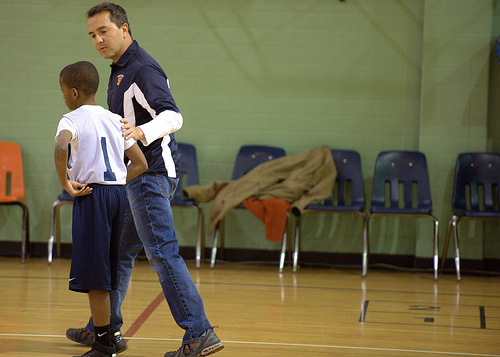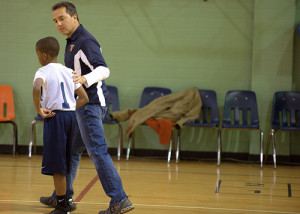Discussing No Court Time with a Player

No Court Time for a player no matter the age is of concern. Amateur or professional, all players would like to feel as they have contributed to a team’s success and played their part in the performance of the group. Most players rate their value to a program as being directly related to the amount of time they are receiving within a game. None of these points are valid, but require a coach to take action in maintaining focus and helping players discover just what it takes to create a successful team and program.
One of the most significant mistakes made by coaches in not having players participate in a game is to ignore the issue surrounding a player receiving no court time. Every person is aware of the situation within the team. Players, support staff, parents, and other significant people will all be aware of when this situation occurs, and to not discuss this matter with the player in question only serves to create anxiety. This is due to much of the discussions outside of the athlete and coach relationship will be speculation planting seeds of miss-information in a player’s mind. Taking the time to discuss the choices made in regards to player rotations with the individual of focus who has experienced no court time will help clarify decisions and reasons behind these choices.
While a coach should not be expected to justify their actions explicitly every time a person feels as though they have been wronged. Having a discussion with a player serves not only as a point of defining the strategy, but also provides an avenue for possible feedback on areas to address for the individual so they can play a role during games.
When approaching the discussion about no court time with a player there are a few points that will assist:
-

Giving feedback in training sessions on what is wanted in a game, helps a player who receives no court time focus on how they can improve (Photo Source: larrison) Initiate the conversation; do not allow the situation to become overly emotionally charged by having the player’s frustrations or worries build up about no court time
- Hold the discussion between the player and coaching staff; not in a team environment
- Remain calm; even if the player becomes emotional
- Be honest, empathetic and sincere in presenting situation to the athlete; make good eye contact with the athlete
- Refocus the athlete on the tasks or goals ahead; define what is needing to be improved for the player to receive court time
- Discuss how you (the coach) will help the player achieve these goals; be part of the solution for the player
- Allow the athletes to ask questions; provide answers to questions
A coach can easily define a number of different ways in which every individual contributes to a team’s success. These differences however are not always evident to players. Sometimes these points do need to be raised and explained so everyone within a team has a common vision about where they as individuals and as a team are heading. Roles can be specialised depending on the tactical situation or fill any number of different parts. A coach defining these helps players to see the big picture and their place within it.
No court time for a player is a real hurdle in feeling as though the athlete has had an opportunity to contribute to the team and also prove themselves to a coach. What needs to be highlighted is that the best indicator for success is performance in training sessions. This will then have an effect of raising the standard in trainings as well as helping establish a culture of performance for all players as the compete for a starting or playing position on the team.
Following the points discussed above in regards to no court time is no guarantee that all parties feel as though they a content with the situation. However, providing an opportunity for a discussion with a player can provide an opportunity for a better relationship between a player and coach if only on the basis of mutual respect.

